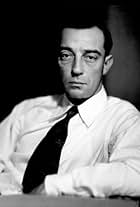

Pairing wine with movies! See the trailers and hear the fascinating commentary for these movies and many more at Trailers From Hell. There are no words for this week’s movies. They’re silent. Well, two of them are. We have corks to pop for each.
The Man Who Laughs is from 1928 and was one of the first Universal silent films to be gussied up with that newfangled gimmick, “sound.” In addition to the sound effects, they even threw in a love song.
Paul Leni directed the movie in the dark fashion that typified German Expressionism. The lead character, Gwynplaine, was disfigured with a surgical grin across his face, and became known as the laughing man – and other, more cruel taunts in the schoolyard, no doubt. The Victor Hugo character had the last laugh, though, as the template for the Batman villain The Joker.
The grin is so macabre and...
The Man Who Laughs is from 1928 and was one of the first Universal silent films to be gussied up with that newfangled gimmick, “sound.” In addition to the sound effects, they even threw in a love song.
Paul Leni directed the movie in the dark fashion that typified German Expressionism. The lead character, Gwynplaine, was disfigured with a surgical grin across his face, and became known as the laughing man – and other, more cruel taunts in the schoolyard, no doubt. The Victor Hugo character had the last laugh, though, as the template for the Batman villain The Joker.
The grin is so macabre and...
- 12/21/2022
- by Randy Fuller
- Trailers from Hell

The Notebook Primer introduces readers to some of the most important figures, films, genres, and movements in film history.One Sings, The Other Doesn't.Images have long played a role in the movement against abortion rights. In April 1965 the cover story of Life magazine proclaimed to show the “Drama of Life Before Birth,” with a multi-page spread by Swedish photojournalist Lennart Nilsson that included the first published image of a living fetus inside the womb, as well as other photos of fetal development. Those other images, however, were taken of miscarried or terminated fetuses, arranged in various positions outside the mothers’ bodies.Nevertheless, this one image of a living fetus persists in being co-opted by the anti-abortion contingent, embellishing all sorts of materials to emphasize a belief that abortion is tantamount to murder. This side has to their benefit a single image—or at least the single basis of an image,...
- 10/13/2022
- MUBI
Review by Sam Moffitt
I love the silent era of movie making. I’ve written of this before and will again, many times I’m sure. Roger Ebert, on his website, made the observation (accurately I’d say) that silent films are not just movies without sound; they are a different medium altogether from the movies we are used to seeing now. Silent films are as different to sound films as radio is to television.
Hollywood Cavalcade was one of the first movies to look back at Hollywood history, and managed to involve several artists who were instrumental in making films that are still enjoyable today.
Hollywood Cavalcade tells the story of Mike Conners (Don Ameche) and his partner, ace cameraman Pete Tinney (Stu Erwin) and their trip to New York City to find a stage actress they can take back to Hollywood and make into a star of moving pictures.
I love the silent era of movie making. I’ve written of this before and will again, many times I’m sure. Roger Ebert, on his website, made the observation (accurately I’d say) that silent films are not just movies without sound; they are a different medium altogether from the movies we are used to seeing now. Silent films are as different to sound films as radio is to television.
Hollywood Cavalcade was one of the first movies to look back at Hollywood history, and managed to involve several artists who were instrumental in making films that are still enjoyable today.
Hollywood Cavalcade tells the story of Mike Conners (Don Ameche) and his partner, ace cameraman Pete Tinney (Stu Erwin) and their trip to New York City to find a stage actress they can take back to Hollywood and make into a star of moving pictures.
- 5/23/2014
- by Movie Geeks
- WeAreMovieGeeks.com
Ramon Novarro and Greta Garbo in ‘Mata Hari’: The wrath of the censors (See previous post: "Ramon Novarro in One of the Best Silent Movies.") George Fitzmaurice’s romantic spy melodrama Mata Hari (1931) was well received by critics and enthusiastically embraced by moviegoers. The Greta Garbo / Ramon Novarro combo — the first time Novarro took second billing since becoming a star — turned Mata Hari into a major worldwide blockbuster, with $2.22 million in worldwide rentals. The film became Garbo’s biggest international success to date, and Novarro’s highest-grossing picture after Ben-Hur. (Photo: Ramon Novarro and Greta Garbo in Mata Hari.) Among MGM’s 1932 releases — Mata Hari opened on December 31, 1931 — only W.S. Van Dyke’s Tarzan, the Ape Man, featuring Johnny Weissmuller and Maureen O’Sullivan, and Edmund Goulding’s all-star Best Picture Academy Award winner Grand Hotel (also with Garbo, in addition to Joan Crawford, John Barrymore, Wallace Beery, and...
- 8/9/2013
- by Andre Soares
- Alt Film Guide
Josef von Sternberg, Charles Chaplin, John Ford: Shasta County Silent Film Festival Friday, October 21 6:00 p.m. Angora Love (1929, Laurel & Hardy). Stanley and Oliver are adopted by a runaway goat, whose noise and aroma in turn get the goat of their suspicious landlord. Attempts to bathe the smelly animal result in a waterlogged free-for-all. Pass the Gravy (1928, Max Davidson). Max Davidson plays a widower father who enjoys raising prize flowers. His neighbor, another widower father, raises prize poultry. The two families spat because the chickens are eating Max's flower seeds. In a Romeo and Juliet-like twist, the men's children decide to marry each other, and the fathers decide to hold a celebratory dinner to show no hard feelings. However, the roast chicken on the table looks very suspicious. It's a Gift (1923, Snub Pollard) Along with a Felix the Cat. A group of oil magnates are trying to think of new ways to attract business.
- 10/7/2011
- by Andre Soares
- Alt Film Guide
On Tuesday morning, Wamg was invited to the Academy of Motion Picture Arts and Sciences’ special press preview of John Ford’s Upstream (1927), one of 75 films recently found in the New Zealand Film Archive and repatriated to the U.S. with the cooperation of the National Film Preservation Foundation.
The 1927 silent film, that was thought lost for decades, had it’s re-premiere Wednesday night, September 1, at the Samuel Goldwyn Theater in Beverly Hills. Many of the VIP’s on hand included Silent Film Historians and those involved with the restoration, as well as the general public.
Having seen the film on Tuesday, I must say the transfer is absolutely beautiful. I was so impressed by the special care taken with the film’s clarity and how vibrant the tinting is on the multiple color frames throughout. The smoky special effects combined with the subtle transitions made me forget I was...
The 1927 silent film, that was thought lost for decades, had it’s re-premiere Wednesday night, September 1, at the Samuel Goldwyn Theater in Beverly Hills. Many of the VIP’s on hand included Silent Film Historians and those involved with the restoration, as well as the general public.
Having seen the film on Tuesday, I must say the transfer is absolutely beautiful. I was so impressed by the special care taken with the film’s clarity and how vibrant the tinting is on the multiple color frames throughout. The smoky special effects combined with the subtle transitions made me forget I was...
- 9/2/2010
- by Michelle McCue
- WeAreMovieGeeks.com
Talk about a treasure chest of films.
Over the weekend, a massive collection of early U.S. films, clocking in at a robust 75 films, was discovered in a vault in New Zealand. According to Variety, the collection of films will be preserved by the New Zealand Film Archive and National Film Preservation Foundation, along with the help of the Academy of Motion Picture Arts and Sciences, George Eastman House, UCLA Film and Television Archive, as well as the Library of Congress, and the Museum of Modern Art to boot.
Among the films, there are films showing such things as how hats are made by Stetson, how someone can set an underwater explosive, and a neo-commercial for a Ford tractor trailer. However, the most interesting piece is not something like that at all.
Uncovered in this collection is an early film from the filmography of John Ford. Upstream, a film previously thought to have been lost,...
Over the weekend, a massive collection of early U.S. films, clocking in at a robust 75 films, was discovered in a vault in New Zealand. According to Variety, the collection of films will be preserved by the New Zealand Film Archive and National Film Preservation Foundation, along with the help of the Academy of Motion Picture Arts and Sciences, George Eastman House, UCLA Film and Television Archive, as well as the Library of Congress, and the Museum of Modern Art to boot.
Among the films, there are films showing such things as how hats are made by Stetson, how someone can set an underwater explosive, and a neo-commercial for a Ford tractor trailer. However, the most interesting piece is not something like that at all.
Uncovered in this collection is an early film from the filmography of John Ford. Upstream, a film previously thought to have been lost,...
- 6/7/2010
- by Joshua Brunsting
- CriterionCast
IMDb.com, Inc. takes no responsibility for the content or accuracy of the above news articles, Tweets, or blog posts. This content is published for the entertainment of our users only. The news articles, Tweets, and blog posts do not represent IMDb's opinions nor can we guarantee that the reporting therein is completely factual. Please visit the source responsible for the item in question to report any concerns you may have regarding content or accuracy.
